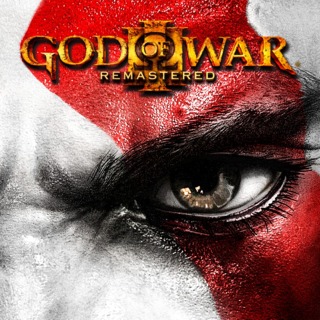A worthy finale to Krato's saga.
The first thing to notice about the game is the breath-taking visuals and the most awe-inspiring settings in a game. The game begins with Kratos standing on Gaia's shoulder, as the Titans climb the mountain and the gods launch their counter-attack. The whole setting, in this case Gaia, rolls and turns as the Titan climbs higher and Kratos brushes away the gnats the gods send to stop him. It shakes and booms as Gaia digs her fingers into the mountainside. Next to Gaia, the other Titans climb up the mountain. It is impossible to appreciate this moment using just words; Kratos is only a tiny speck next to them. It does not end there, however. The gods soon arrive at the scene and separate battles take place in the background while Kratos turns his enemies into bloody pulp. Whether it is Hades pulling immense, lightning-shrouded Oceanus off the face of the mountain or another rocky Titan struggling against a leviathan that Poseidon summons, everything remains massive in scope and detail. The scene culminates in a fight against Poseidon and his creature, when the watery god finally reaches Gaia.
Everything is rendered with amazing detail – animations, lighting, and textures, the game is simply stunning – and this makes the combat all the more satisfying. The combat rips and crunches just like in previous God of War games. It actually feels like combat, and this time is accompanied with gruesome detail, like glistening entrails escaping a centaur's stomach when Kratos tears him open. Unfortunately, there is only one death animation for most of the enemies, but the repetitive slaughter does not make the combat any less satisfying. Kratos also has an improved arsenal with which to deal death. Three new weapons accompany his chained blades. Switching between them only requires the touch of a button and each of them have their own magical attacks and special features, like summoning souls, electrifying rusted pieces of machinery or breaking stuff. Kratos can also grab smaller enemies and batter other enemies with them or use his weapons to latch onto enemies from a distance, and depending on the weapon, hurt them in innovative ways. Along with the new weapons, Kratos also receives three items that are linked to a constantly charging item meter. One of these items, a bow, may be familiar from God of War II, but it played as a magic attack then. They help make the combat a little more diverse and also spice up the puzzle-solving and walking around that goes on when Kratos is not killing stuff.
The game sets up a good pace between combat and puzzle solving. It never allows the combat to become repetitive; the quiet, uninterrupted sections serve to whet your appetite before the next fight comes up. Sadly, the puzzles offer very little challenge, and sometimes it feels like Kratos is simply walking from one bloody fight to another without doing much in between. Despite that, the puzzles in God of War III are still interesting, since they employ game mechanics that have not been seen in the previous games, such as the shifting cubes of the Labyrinth or the environment-warping changes of perspective in Hera's Garden. It is in these peaceful moments that one has time to notice things that are not related to combat. The artistic style and the musical score fill the lonely settings with varying temperaments that shift to fit the unique settings, like the haunting grandeur of the Labyrinth or the echoing hopelessness of Tartarus.
To those who are not familiar with it from previous games, God of War III's controls are easy to pick up and master, with never a hitch detracting you from the bloody experience. There is also some additional combat, unlocked by beating the game. This includes a few costumes for playthroughs, the usual God of War combat challenges and a new arena feature with a lot of customisable options. These do not add much to the game, but are still fun additions.
God of War III is ultimately a worthy finale to Kratos's saga, wholly deserving of its name and satisfying till the end.

